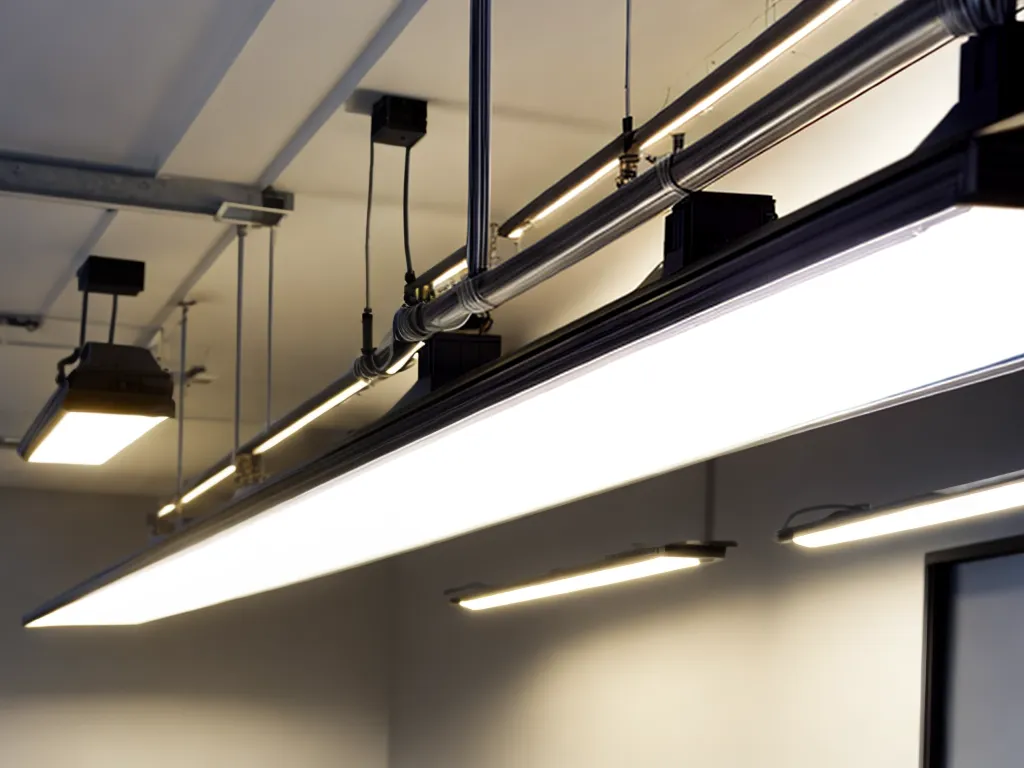
Introduction
When it comes to lighting in commercial spaces, low voltage lighting systems are very common. They allow for accent lighting, spotlighting, and creative lighting designs. However, like any electrical system, low voltage lighting can develop problems. As the owner or facilities manager of a commercial property, it's important to understand how to troubleshoot and resolve issues with low voltage lighting to keep your building looking its best. In this article, I'll provide an in-depth look at how to diagnose and fix common low voltage lighting problems.
Understanding Low Voltage Lighting Systems
Before we get into troubleshooting, let's review what low voltage lighting is and how it works.
What is Low Voltage Lighting?
Low voltage lighting runs on 12 or 24 volts, compared to the 120 volts used by standard lighting systems. Low voltage allows for smaller gauge wiring and makes lighting fixtures more compact and flexible. The power originates from a transformer that steps down the building's higher voltage to a lower, safer voltage.
Components of Low Voltage Lighting
A low voltage system consists of three main components:
-
Transformer - Steps down high voltage to low voltage. Often located in an electrical room.
-
Wiring - Low voltage wiring that runs from the transformer to fixtures.
-
Fixtures - Low voltage fixtures, which may include accent lights, spotlights, and under-cabinet lights.
Advantages of Low Voltage
Some key benefits of low voltage lighting include:
-
Safety - The lower voltage reduces the risk of shocks or electrocution.
-
Lower energy use - Low voltage fixtures consume less energy.
-
Smaller fixtures - Fixtures can be made smaller due to less heat.
-
Flexible - Easier to install lighting in varied configurations.
Common Low Voltage Lighting Issues
Low voltage lighting systems are generally reliable. However, here are some of the most common issues that can occur:
Fixtures Not Turning On
If some or all fixtures won't turn on, there are several possible causes:
- Tripped breaker or blown fuse for the transformer
- Faulty transformer
- Loose, damaged, or disconnected low voltage wiring
- Failed LED driver or other component in fixture
- Faulty switch, dimmer, or controller
Dimming or Flickering Lights
Lights that flicker or don't dim properly may indicate:
- Incompatible dimmer or controller
- Damaged low voltage wiring
- Failing LED driver
- Wrong transformer voltage being used
Buzzing or Humming Noise
Buzzing or humming from fixtures points to:
- Faulty transformer
- Bad connection in wiring
- Bad fixture component
Steps for Troubleshooting Low Voltage Lighting
Now let's go through a systematic approach for diagnosing low voltage lighting issues:
1. Check the Breaker and Transformer
The first place to start is confirming the transformer has power. Check the breaker or fuse supplying the transformer and reset or replace if needed. While here, listen and feel for any signs of the transformer buzzing or overheating. Signs of a faulty transformer include:
- Breaker frequently tripping
- Buzzing, humming, popping noises from transformer
- Unusually hot transformer
- Burning smell from transformer
- Visible damage to transformer casing
A faulty transformer will need to be replaced.
2. Inspect the Low Voltage Wiring
Next, check the low voltage wiring between the transformer and lighting fixtures. Look for any:
- Loose, disconnected, or damaged wires
- Corrosion on connections
- Staples or fasteners putting stress on wire insulation
- Nails/screws penetrating wires
Repair or replace any compromised wiring.
3. Check for Faulty Fixtures
If the transformer and wiring check out, individual fixtures may be malfunctioning. Try the following troubleshooting steps:
-
Swap fixtures - Exchange a working fixture with a problematic one to test if issue follows the fixture.
-
Check connections - Disconnect and reconnect wiring at the fixture, ensuring a tight connection.
-
Bypass dimmers/controls - Eliminate any dimmers or controllers temporarily to isolate the problem.
-
Replace components - Swap out LED drivers or other failing internal parts.
-
Replace whole fixture - If fixture is non-serviceable or parts don't resolve, replace entire fixture.
4. Verify Compatibility of Controls
For lighting that flickers or doesn't dim properly, make sure dimmers, switches, and controllers are all rated to handle the load and compatible with the fixtures. Replace controls if needed.
5. Test Transformer Voltage
Use a voltmeter to check output voltage at the transformer and fixture. If voltage is too high or low, the transformer may need to be replaced. Make sure the transformer matches the voltage requirements of the lighting.
When to Call an Electrician
If you've methodically worked through these troubleshooting steps and lights still don't function properly, it's best to call a qualified electrician. They have the proper tools and knowledge to identify issues like:
- Short circuits
- Faulty transformers
- Damaged wires in walls
- Incorrect wire gauge
- Exceeded maximum fixture load
Only attempt low voltage lighting repairs if you have training and experience in electrical systems. Always shut off power at the breaker before servicing.
Maintaining a Low Voltage Lighting System
Along with troubleshooting issues as they arise, some maintenance can help prevent problems:
-
Keep transformers clean and ventilated. Don't cover or block vents.
-
Periodically check that wiring connections are tight.
-
Make sure outside low voltage wiring has waterproof gel-filled connections.
-
Have electrician check overall system integrity every 3-5 years.
Proper installation and maintenance will maximize the longevity of your low voltage lighting system. But being prepared to diagnose and fix problems will keep your lights shining.